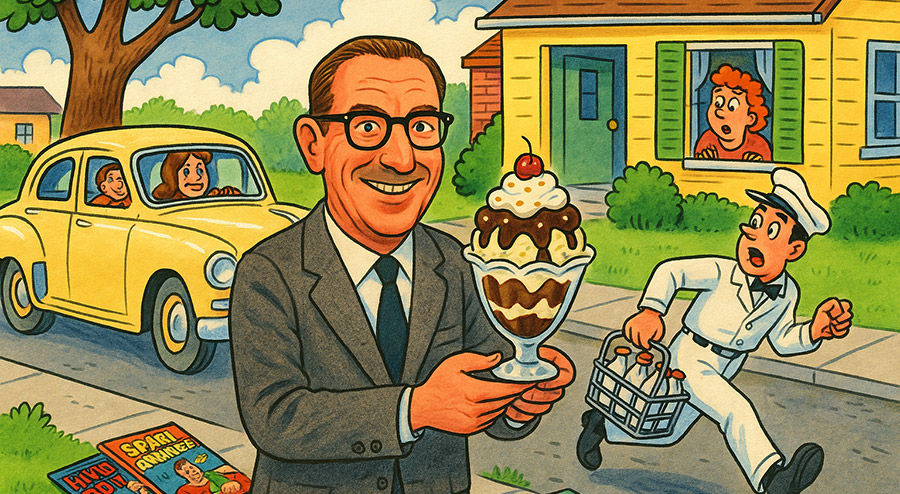…when everything cost next to nothing and people smoked in hospitals.
In 1950, Gérard Vézina proudly opened his own business. He didn’t know it yet, but he had just begun a family adventure that would last through the decades—and a few recessions, too.
To really understand where we’re coming from, though, we need to go back to a time when the word “inflation” was just a vague concept brought up during games of Scrabble. It was a time when you could buy a house without selling a kidney, fill up your tank with just a few coins, and have milk delivered to your door by a man in a cap.
For the sake of history—and to experience a bit of generational shock—here’s a look at the cost of living in 1950, when our grandparents paid less for groceries than they do for McDonald’s today.
A cup of coffee was cheaper than a button of jeans!
Ah, 1950—that almost mythical period when you could buy a house for the price of a top-of-the-line tablet computer.
A liter of gas cost 10 cents, a cup of coffee cost 5 cents, and rent? Barely the price of a home-delivered meal.
An annual income of $3,200 was enough to belong to the middle class. We drove a new Chevrolet for $1,500 and were outraged when the price of bread went up to 18 cents. SCANDAL!
Your grandfather could go to the movies for a quarter, meet your grandmother, and treat her to a seven-cent ice cream. And voilà—60 years of marriage!
How about today? You pay $14 for a movie and $12 for popcorn, only to leave with a bill and a broken heart.
What about houses? In 1950, you could buy one with three checks and a smile. In 2025, you need a 30-year loan, a letter of recommendation from your priest, and a banking miracle.
In short, the cost of living in 1950 was like an episode of La p’tite vie: improbable, funny, and magical. We’re not saying that everything was better, but filling your tank for $2 has a certain charm.



